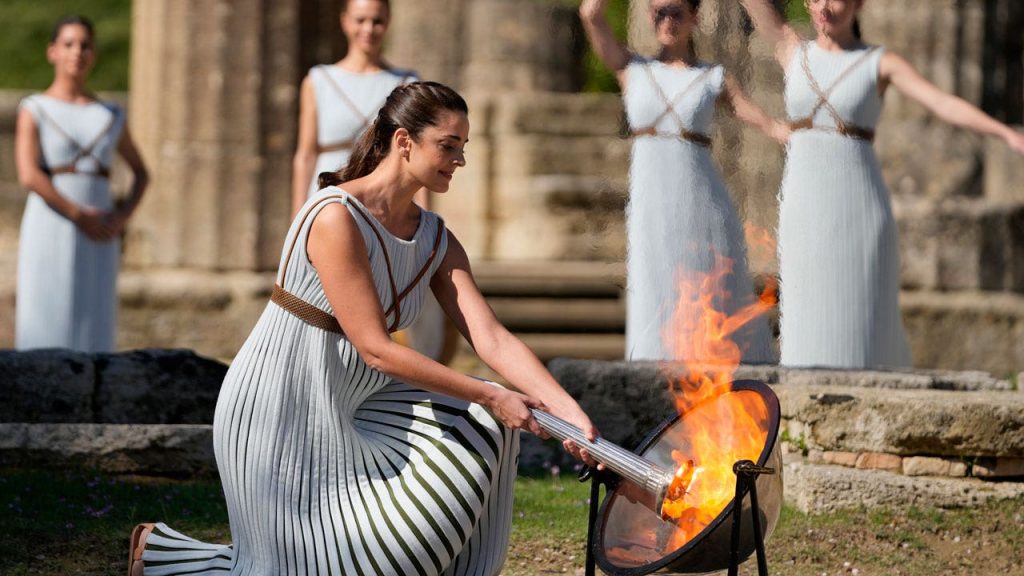A priestess prays to a dead sun god in front of a fallen Greek temple, where the flame for the Paris Olympics is lit in a meticulously choreographed ceremony. The flame is then carried through Greece for more than 3,100 miles before being handed over to French organizers. The elaborate ceremony at Ancient Olympia is a vital part of every Olympics, connecting the modern event with its ancient Greek origins. The flame kindles a cauldron that burns in the host Olympic stadium until the end of the games, and is then used for the Paralympics.
The lighting of the flame involves an actor playing an ancient Greek priestess using a silver torch containing combustible materials over a concave mirror. The sun’s rays bounce off the metal globe and ignite the torch, symbolizing the start of the Olympic torch relay. This tradition dates back to the 1936 Olympics in Nazi Germany, where the idea was born out of blending the games of antiquity with the modern revival. The torch relay through Greece culminates in Athens before the flame is handed over to the host city.
Ancient Greek tradition did not include the flame-lighting ceremony at the games, but modern Olympics have incorporated this tradition to connect with ancient roots. The games of antiquity honored Zeus and included events such as running, wrestling, and horse racing. Life in ancient Greece revolved around physicality, with the games being a significant cultural event attended by thousands. The games continued until they were banned by Christian authorities in A.D. 393.
The flame-lighting ceremony is not without its challenges, including potential disruptions by human rights activists as seen during the lighting ceremonies for the Beijing Summer and Winter Games. Rain and heavy cloud cover can also impact the ceremony, but organizers hold rehearsals and have backup flames in case of unforeseen circumstances. Despite these challenges, the ceremony at ancient Olympia remains a focal point, attracting global attention and providing a link between the past and present.
The torch relay has seen some mishaps in the past, including torches going out due to wind or rain. Quick fixes, such as using a lighter to rekindle the flame, have been employed to keep the relay moving smoothly. Despite these challenges, the torch relay remains a symbol of unity and connection as the flame travels from Greece to the host city. The pageantry and symbolism of the ceremony at Olympia continue to reignite passion for the games and honor the traditions of the ancient Greeks.
The flame-lighting ceremony at Olympia holds significant cultural and historical importance as it connects the modern Olympics with the ancient games of Greece. The meticulous choreography, symbolism, and tradition of the ceremony provide a unique link between the past and present, showcasing the enduring legacy of the Olympic Games. Despite challenges and potential disruptions, the flame continues to burn brightly, symbolizing unity, peace, and athletic excellence as it travels from Greece to the host city, igniting a global celebration of sportsmanship and competition.


